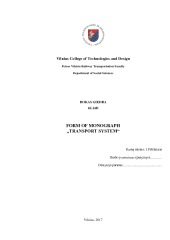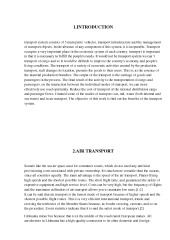Transport System



Transport system.
Lithuania minor but because that is in the middle of the road transit European makes. All aerodromes in Lithuania has a high-quality connection to its other domestic and foreign airfields and is served Mondays through Lithuania or coming to the planes regardless of their public or private addiction. In Lithuania, airfields and air corridors to enjoy four different hierarchical bodies: the Ministry of transportation, civil aviation, in the regulation of the Ministry of national defence priklausančiosKarinės in the air force and the national defence volunteer forces aviation, aviation services of the Ministry of the Interior, the Ministry of education and science under the aviation professionals provide training institutions (for example, Anthony Gustaičio Aviation Institute).[3;4]
Planes use a lot of fuel; during the transport the same number of passengers at the same distance by train sunaudosime 5 times less fuel
Water transport is the oldest mode of transport, for many years been the main mode of transport for centuries, connect at both european and member states, and the world economic development. The sea is by far the best out of all the services. Relations between continental operated a very large sea routes to ensure that goods and passenger delivery to many countries of the world. [5]
SEA transport: Sea transport is considered one of the safest and most common types of transport. Today, the transportation of the sea serves about 80% of the international trade, despite a significantly longer time than land freight transport. Cargo transportation by sea has many advantages compared to conventional transport. This is one of the cheapest modes of transport from the far edges of the cargo. Sea transported not only conventional, but abnormal loads.[1] Large capacity allows you to transport a very heavy and bulky goods. The use of container transport by sea to protect the cargo from adverse weather, involuntary demagde.

















